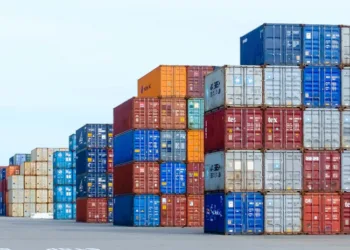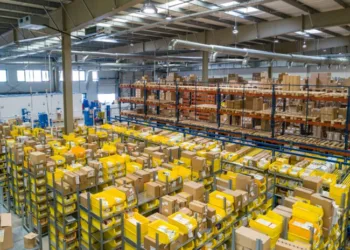Wolfgang Lehmacher and Hans Galland on the latest in logistics AI.
AI in supply chains, logistics, and transport was a bit like a hammer desperately searching for nails, powerful in theory but struggling to find the right fit in the real world. That story is changing. We have entered an era where AI is not just a futuristic ideal or a high-cost experiment. It is becoming a practical, productised tool that companies can deploy more cost-effectively across complex shipping challenges.
This shift is more than just a technological upgrade. It signals a fundamental rethink about how supply chains consume AI. The days when businesses relied solely on off-the-shelf software or fully bespoke, custom-built solutions are increasingly behind us. What is emerging and gaining traction rapidly are configurable AI systems. These solutions are tailored to fit the unique quirks of an organisation’s data, processes, and operational realities rather than forcing a blanket approach.
Innovative supply chain leaders are no longer trying to reshape their workflows around generic software. They are partnering with global systems integrators and consultancies, such as Accenture, Deloitte, and Palantir, alongside specialised AI teams. Together, they assess the foundational processes that make their networks tick and then design bespoke or, preferably, configurable systems that bring tangible benefits. This collaborative approach unlocks efficiencies and competitive advantages that off-the-shelf tools simply cannot deliver and leaves behind the higher costs typical of entirely custom builds.
The crucial point is that the real value of enterprise AI lies not in the new algorithms but in how seamlessly those models are integrated into existing business systems and workflows. Advanced AI labs are churning out foundational models. Still, if these innovations cannot be embedded in ways that complement real-world operations, melding with legacy infrastructure, partner networks, and data flows, the benefit remains mostly theoretical.
This is where organisations that “get it” separate themselves from the pack. They do not just chase AI for AI’s sake. They focus on understanding and transforming the underlying processes first. Then, they configure and integrate AI tools to bridge the gap between AI’s potential and its actual impact. Integration and execution are seen as the key differentiators. The wisdom extends to academics like Erik Brynjolfsson, Jerry Yang, and Akiko Yamazaki, professor and senior fellow at Stanford University, who point out that productivity gains come more from process transformation than new technology.
We also should not mistake the falling cost of AI development for free or frictionless adoption. Running AI-powered systems still carries ongoing expenses for maintenance, compliance, training, and integration, fuelling a steady demand for expert services and specialised support. Forward-thinking supply chain leaders recognise that innovation involves upgrading infrastructure like data lakes and migrating systems, like transportation management, to multi-tenant cloud platforms, while navigating regulatory and governance complexities.
Another hallmark of this evolving landscape is the blurring lines between software vendors and consulting firms. Where vendors once simply sold software, many now act as consultative partners. Meanwhile, consulting firms are delivering solutions that behave more like software products. This convergence fuels a hybrid model: solutions “built for you” leveraging powerful foundation models yet fine-tuned for each company’s specific data profile and operational challenges.
AI is not a plug-and-play magic bullet but a strategic capability that must align with the realities of business processes. Enterprise AI’s next chapter in supply chains, logistics, and transport involves configurable, deeply integrated solutions that deliver measurable value, as well as getting the transformation fundamentals right. Because when it comes to AI and efficiency, one size never fits all. In the shipping sector, marked by high complexity and variability, this bespoke configurability is indispensable.






















